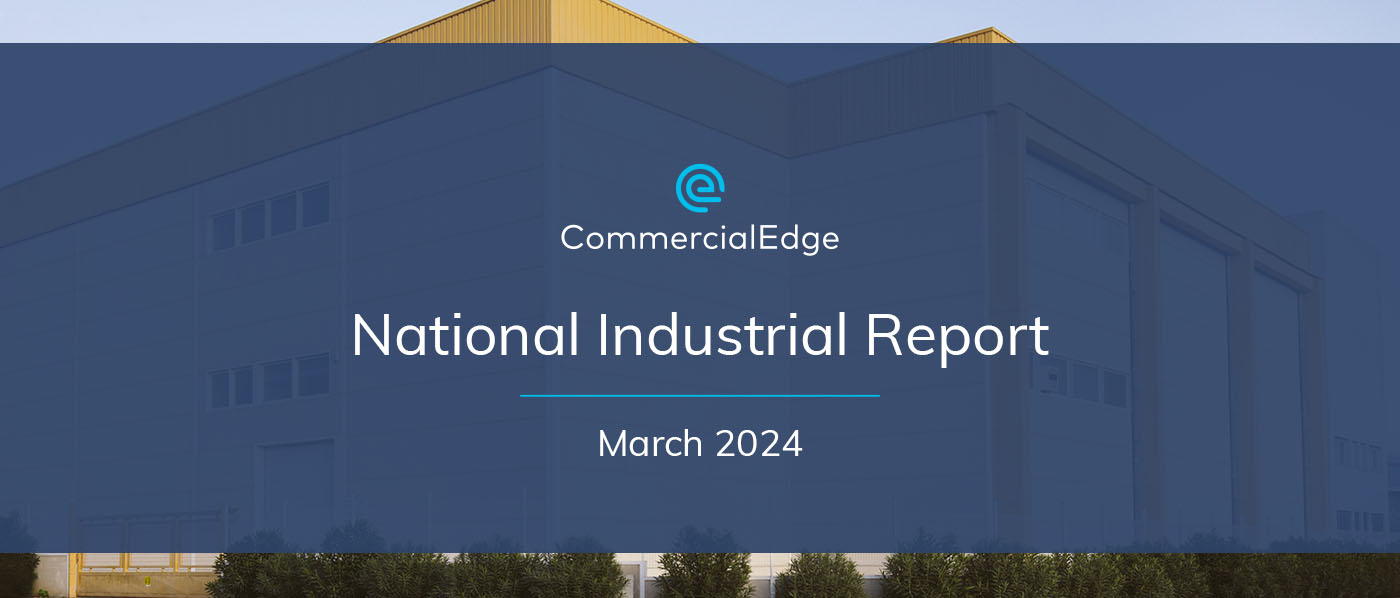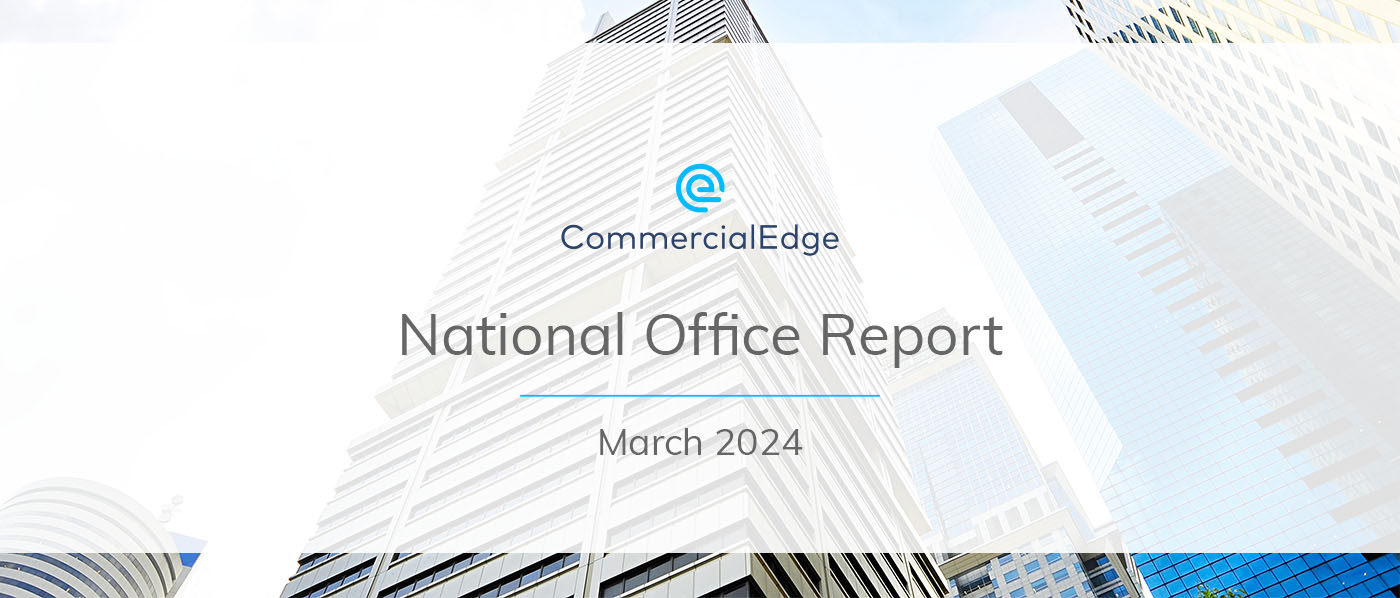Key Takeaways:
- Total amount of office debt across the country was $920 billion as of October 2023
- Maturing office loans are concentrated in primary markets, Class A properties and urban areas
- Nearly $150 billion of mortgages on U.S. office buildings are maturing by end of 2024
- Nine metros will see at least 20% of all office mortgages by volume maturing by end of next year
- Manhattan leads largest markets with $19.8 billion of loans coming due by end of 2024
- Over $300 billion of mortgages — one-third of total — are scheduled to come due by end of 2026
- More than half of office loans by dollar value will mature by end of 2026 in Atlanta and Houston
- As of October, office lease spreads were negative in nearly one-third of major metros
- The largest negative spreads were in Pittsburgh, San Francisco, Chicago, Washington D.C. and Manhattan
- Metros with positive lease spreads include Miami, Austin, Charlotte and Portland
Nearly $150 billion of mortgages on U.S. office buildings are maturing by the end of 2024, and just over $300 billion of loans will mature by the end of 2026, according to a review of the CommercialEdge property databases as of October 2023.
The review of more than 80,000 office properties in the U.S. with $920 billion of mortgage debt found that 16.1% of loans by dollar volume will mature by the end of 2024, and 32.7% will mature by the end of 2026. Maturing loans are concentrated in the largest markets, led by Manhattan, Class A properties and in urban areas. Ten metros have more than $5 billion of office loans maturing through the end of 2024, and 10 have at least $10 billion of loans maturing by the end of 2026.
The volume of loan maturities is worrying, coming at a time when the combination of weaker demand, rising costs and lower property values are squeezing office owners while banks and investors are trying to reduce exposure to offices.
The advent of work-from-home has prompted companies to cut back on space requirements, especially in primary office markets with long commutes. The national office vacancy rate rose to 17.8% in September 2023, up 120 basis points year-over-year and up from 13.4% before the pandemic in January 2020, according to the October CommercialEdge office report.
As companies reduce requirements, the amount of sublease space is growing as well, to 2.5% of office inventory nationally. While average asking rents nationally have increased slightly since 2020, metros with high vacancy rates, such as Detroit, Houston and San Francisco, are seeing rent growth turn negative.
Office building tenants now have more options and leverage to negotiate for favorable terms, such as shorter lease terms and requiring landlords to finance renovations for amenities, including cafeterias, fitness centers, improved air circulation and outdoor break spaces. As tenant improvements and other costs increase, owners find it increasingly difficult to maintain net income. Consequently, office delinquency rates are rising and are likely to get worse as the growing number of underwater loans mature.
Over 15% of Office Loans Due by 2024
In the short term, through the end of 2024, we found just over 6,000 properties with $148.2 billion of mortgages that are scheduled to mature. That represents 16.1% of all volume of loans on office properties.
Total Office Loan Volume: October 2023
The metro with the most at stake is Manhattan, which is the largest market by virtue of having the most total office space and the highest price per square foot. We identified 1,159 office properties in Manhattan with loans, and 136 of those loans, totaling $19.8 billion, are maturing by the end of 2024, nearly double the next highest metro, Los Angeles, which has $10.3 billion of loans coming due over that period. Other metros with a large number of maturities by dollar volume include Chicago ($10.1 billion), Washington, D.C. ($8.6 billion), Houston ($8.1 billion) and Boston ($7.9 billion).
Office Loan Maturities Through 2024
Nine metros will see at least 20% of all office mortgages by volume maturing by the end of 2024, and, in tenth place, Nashville was close at 19.8%. Metros with the highest percentage of mortgage volume maturing in the short term include Houston (29.7%), Atlanta (28.8%), Connecticut (27.3%), Philadelphia (26.7%) and Chicago (26.4%).
One-Third of Office Loans Mature by 2026
When looking at a longer time frame, through the end of 2026, we found nearly 14,000 properties – accounting for 32.7% of all office property mortgage volume – with $300.9 billion of loans coming due. Ten metros have at least $10 billion of loans maturing, led by Manhattan, with $56.7 billion of loans maturing. Other metros with large maturity volumes include Los Angeles ($21.6 billion), Chicago ($17.9 billion), Washington D.C. ($16.2 billion) and Houston ($13.7 billion).
Office Loan Maturities Through 2026
Eight metros have at least 40% of total office mortgages coming due by 2026, and in 18 metros, at least 30% are set to mature. More than half of office loans by dollar value will mature by the end of 2026 in Atlanta (52.6%) and Houston (50.5%). Other metros with high percentages of maturities through 2026 include Chicago (46.8%), Denver (45.2%), Connecticut (44.7%) and Minneapolis (43.9%).
Maturing loans are concentrated in urban properties, which account for $176.9 billion, or 58.8%, of the loans maturing through 2026, while $123.8 billion are situated in suburban properties. Not surprisingly, primary markets are the leaders in both volume and percentage of urban office mortgages maturing: Manhattan ($56.7 billion, 32.5% of total mortgage volume), Los Angeles ($21.6 billion, 28.9%), Chicago ($17.9 billion, 32.2%) and Washington D.C. ($16.1 billion, 19.9%).
Houston ($13.7 billion, 50.5% of maturing mortgages) leads in the volume of suburban office properties with mortgages maturing by 2026, with other concentrations in San Jose ($10.4 billion, 25.1%) and Dallas $12.1 billion, 39.0%).
Office Loan Maturities by Urban & Suburban Regions
Another concentration is in higher quality properties, as just over two-thirds ($203.2 billion) of office loans maturing by 2026 are backed by assets rated “A+/A” by CommercialEdge, while $97.7 billion are rated “B” or “C.”
Manhattan, at $47.0 billion, leads in A+/A property mortgages maturing, followed by Los Angeles ($15.5 billion), Chicago ($12.6 billion) and Washington, D.C. ($11.9 billion). Metros with the most maturing mortgages on B/C offices are Manhattan ($9.7 billion), Houston ($7.6 billion), Los Angeles ($6.0 billion), Chicago ($5.3 billion) and Philadelphia ($5.3 billion).
Office Loan Maturities by Market & Improvement Rating Through 2026
The potential for default involves not just volume but the performance of the market and individual properties. Defaults are more likely to occur in markets that are overbuilt and/or have seen demand crushed as a result of the pandemic.
Metros with a combination of high vacancy rates and a large number of maturing loans by 2026 include Houston (24.9% vacancy rate as of October 2023 and 47.1% of loan volume maturing); San Francisco (24.2% vacancy rate with 30.1% of volume maturing); Austin (21.2% vacancy rate and 30.3% of volume maturing); Denver (20.7% vacancy rate and 41.3% of volume maturing); Atlanta (18.7% vacancy rate and 49.1% of volume maturing) and Chicago (17.9% vacancy rate and 42.4% of volume maturing).
One way rent declines play out is through the lease spread or the difference between the rate of expiring leases and new leases. A negative lease spread is a red flag because it signals weakness in demand and potential for declining rates going forward, while a positive spread indicates a more balanced supply-demand equation.
Office Vacancy & Lease Spread by Market: October 2023
As of October, lease spreads were negative in nearly one-third of major metros, with the largest negative gap found in metros including Pittsburgh (-10.5%), San Francisco (-5.4%), Chicago (-4.8%), Washington, D.C. (-3.3%) and Manhattan (-2.6%), our data shows. It is no coincidence that the largest negative spreads are happening in most of the biggest office markets in the country, which have had weak office attendance and lower demand and absorption post-COVID-19.
Metros with positive lease spreads – where new rents are rising – include Miami (9.0%), where the financial and business services sectors have grown in recent years, Austin (5.9%), Charlotte (5.6%) and Portland (5.5%).
To be sure, lease spreads can change from month to month and are not a perfect indicator. Positive lease spreads in any given period can mask potential longer-term problems. Austin, for example, has one of the most active development pipelines in the country, with nearly 6 million square feet under construction that will add 6.6% to current stock. While Austin remains a metro with rapid job growth, new office buildings are filling slowly as technology firms cut back growth.
Distress Rising – How Much?
The office sector is uniquely positioned among commercial property types for distress. Demand for space has dropped 10-20% since the onset of COVID-19, as workers have become accustomed to working from home, and most companies have embraced a hybrid workplace either out of convenience or necessity to retain workers.
While asking rents have remained flat – the average national asking rent as of September 2023 was $31.75, up 1.1% from the pre-pandemic level of $31.38 in January 2020, per the most recent CommercialEdge office report – net income is falling as expenses such as tenant improvements, maintenance and insurance are increasing rapidly.
Percentage of Loans Maturing Between 2023-2026, Vacancy Rate by Metro
The national vacancy rate has increased by 440 basis points since January 2020, with the biggest increases in core office markets like Manhattan and San Francisco. Going into the pandemic in January 2020, Manhattan’s vacancy rate was 7.9%, while San Francisco’s was 7.3%, our data showed. This October, Manhattan’s vacancy rate stood at 17.7%, up 200 basis points year-over-year, while San Francisco’s was 24.2%, up 450 basis points year.
Office property values are down sharply as capitalization rates increase. As of early November 2023, office REIT stocks were down 28% year-over-year and have produced a -10.8% average annual return over the previous five years.
Even though private measures such as the NCREIF Property Index (NPI) are much slower to react to changing prices, total returns for office properties in the NPI were -17.1% for the year ending 3Q 2023, while appreciation was -21.1%. Total returns for urban offices in the NPI were -20.6% during that period and -12.9% for suburban assets, and industry analysts expect private office property values to continue sinking.
Liquidity in the capital markets is a major headwind. Investor demand is weak, and lenders will only write office loans with low leverage and high coupons, terms that borrowers only accept as a last resort. CMBS investors are reluctant to buy bonds backed by offices.
Through three quarters in 2023, CMBS and collateralized loan obligation (CLO) issuers had securitized only $3.7 billion of office loans, down 75% from the year-earlier period, according to Commercial Mortgage Alert. As recently as 2021, offices served as collateral for $38.6 billion of loans securitized by CMBS and CLO issuers, per CMA.
Distress has already started to climb. As of October 2023, 5.8% of office CMBS loans were delinquent, up from 1.8% in October 2022 and 1.9% in December 2019, according to the CRE Finance Council and Trepp. Some $9.8 billion of CMBS loans on offices, or 8.3%, were in special servicing as of September 2023, per Trepp. Those negative numbers will increase as loans mature and properties face a funding gap – in other words, they qualify for less proceeds than existing debt in place because banks have grown more conservative while mortgage rates have shot up as Treasury and SOFR indexes rise.
How much office property distress will increase depends on the extent of interest rate increases and how long rates remain elevated. The worst-case scenario is if the job market weakens while property values continue to fall and interest rates rise from current levels. A more optimistic scenario would have the employment market remain strong while interest rates stop rising or even fall. In either scenario, office delinquencies are likely to jump, but the optimistic scenario would mitigate the pain as opposed to a larger crisis.
Disclaimer
Although every effort is made to ensure the accuracy, timeliness and completeness of the information provided in this publication, the information is provided “AS IS” and CommercialEdge does not guarantee, warrant, represent or undertake that the information provided is correct, accurate, current or complete. CommercialEdge is not liable for any loss, claim or demand arising directly or indirectly from any use or reliance upon the information contained herein.
Fair use and redistribution
We encourage you and freely grant you permission to reuse, host or repost the research, graphics and images presented in this article. When doing so, we ask that you credit our research by linking to CommercialEdge.com or this page so that your readers can learn more about this project, the research behind it and its methodology. For more in-depth, customized data, please contact us at [email protected].
Media Contacts
Peter Kolaczynski
Director, Commercial
[email protected]
(800) 866-1124 x2410
Paul Fiorilla
Director of Research
[email protected]
(800) 866-1124 x5764
Doug Ressler
Media Contact
[email protected]
(480) 695-3365
Stay current with the latest market reports and CRE news
Latest Posts
Recent Reports
Q1 2024 Office Sales Dip to $5.4 Billion, 17% Below Last Year’s Figure
Office sales continued to wane in Q1 2024 as companies embraced remote and hybrid work and re-examined their office footprints.
Industrial Sale Prices Hold Firm Amid Normalizing Demand and Shifting Capital Markets
Despite the decline in sales over recent quarters, the average sale price of industrial properties has remained high, increasing by 9.6% quarter-over-quarter and 2.0% year-over-year.
U.S. Office Market Continues to Navigate Demand Shifts
As the office market navigates trends shaping the sector in recent years, we anticipate an uptick in distress activity and discounted sales.






